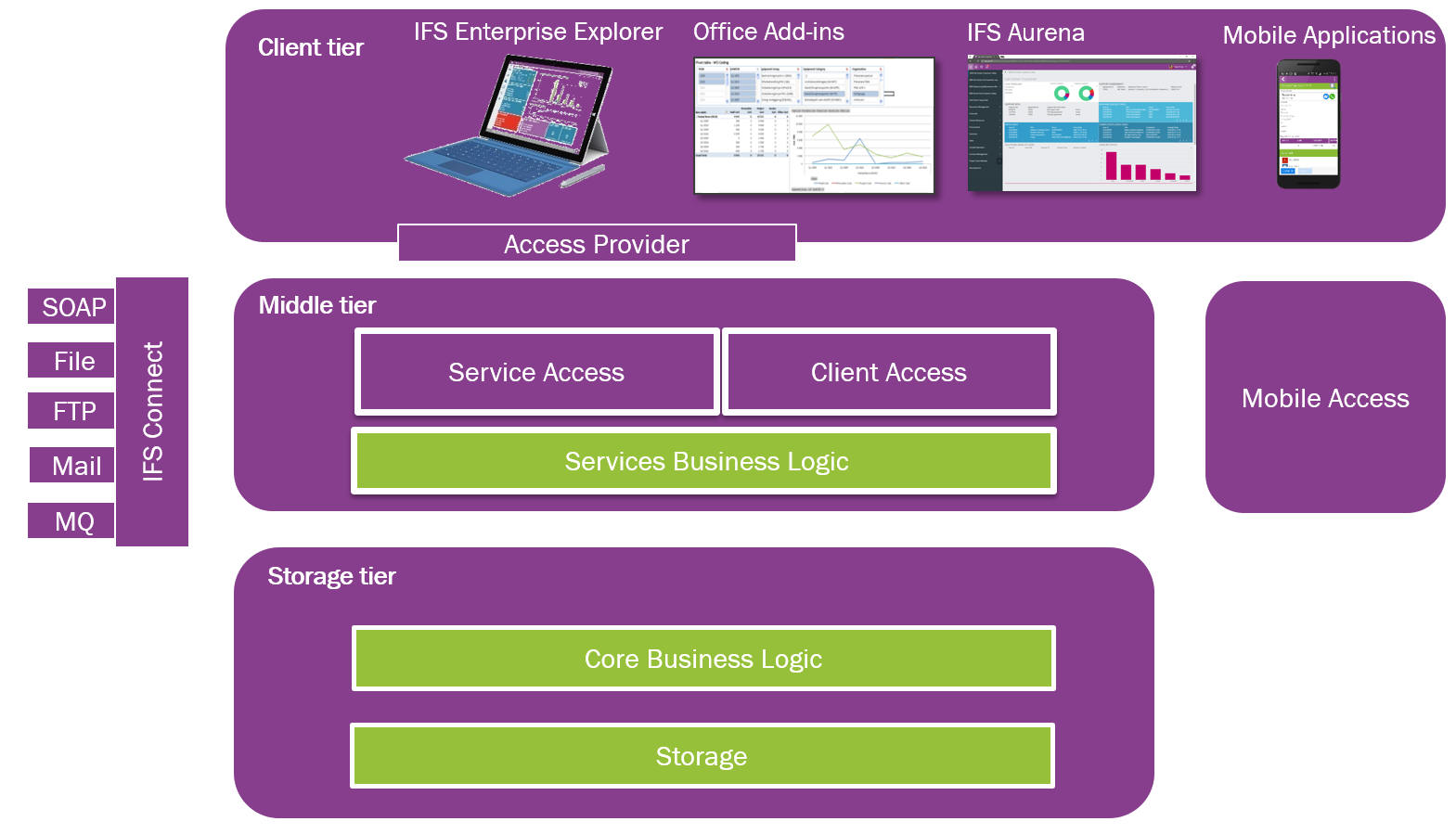
IFS Applications Architecture is a multi-tier architecture and is designed using three main tiers with different purposes
Communication between tiers are done using standard protocols such as HTTPS
and JDBC.
Each tier has their own software objects representing data and
functions. These software objects are all derived from a common model and
designed in IFS development tools.

IFS Applications Architecture is divided in to three main tiers, with the business logic available through access providers to IFS user interfaces and custom interfaces.
The UI tier provides interaction with human users and client-side applications and devices. Clients can exists in many different scenarios, traditional desktop and web, mobile apps, add-ins to Office or other productivity software. Regardless which client techonolgy, the same business logic is used.
The business logic tier is the heart of the application. It implements business knowledge, functionality, and processes. This tier is divided into two sub tiers. The core business logic sub tier is a high-performance, object-oriented implementation of business-object level and activity-level business logic. Above core business logic, an service access tier defines the business logic access, the API. This API then used for integrations, client access, and process level logic.
The fully normalized data storage tier is based on the relational database model. The database server is configured so that no table data can be accessed directly. All data modifications are done through the business logic, this guarantees data integrity and prevents "back-door" modification.